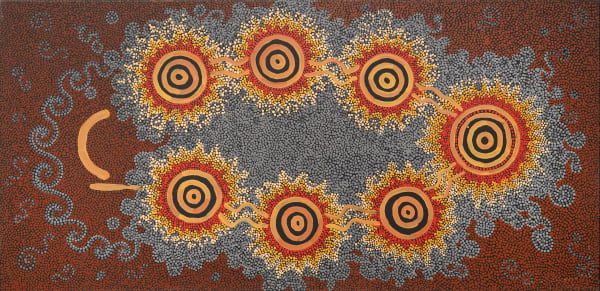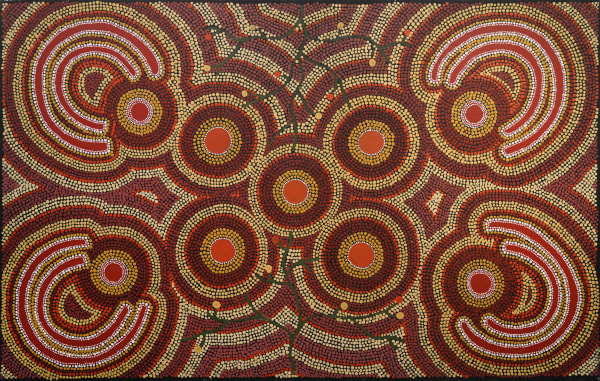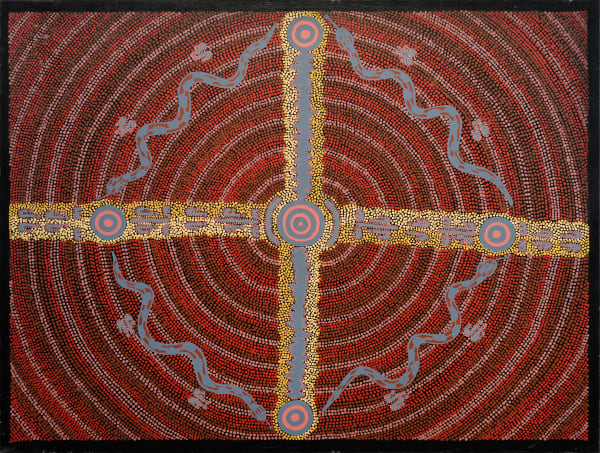Malcom Jagamarra
Malcolm Jagamara is a distinguished Warlpiri artist, cultural leader, and member of the Stolen Generations, whose life and work bridge traditional Aboriginal heritage with contemporary expression.
During his early childhood, Malcolm lived a traditional lifestyle, travelling on walkabout with his mother and extended family. However, at the age of six, he was removed from his family under the government's assimilation policies and sent to Adelaide, where he spent the next eighteen years. There, he attended Adelaide Boys High School and became a talented athlete, playing professional football for the North Adelaide Football Club until 1975.
In 1978, Malcolm returned to Alice Springs and reunited with his family. He underwent traditional initiation ceremonies in 1983, embracing his cultural heritage and absorbing the sacred songs, dances, and stories of the Lander River Warlpiri people. Encouraged by his uncle, artist Willie Reilly Japanangka, Malcolm began painting in 1985, translating his rich cultural knowledge into visual art.
Malcolm's artworks are deeply rooted in Warlpiri Dreaming narratives, including the Snake (Wana), Fire (Walu), Water (Ngapa), Budgerigar, Seven Sisters, and Goanna stories. His paintings often feature intricate dot work and symbolic representations of his ancestral lands, particularly the Lander River region. His work has been exhibited nationally and internationally, and he has served as artist-in-residence at institutions such as the Art Gallery of New South Wales and Macquarie University.
Beyond his artistic achievements, Malcolm has been a vocal advocate for Aboriginal rights and self-determination. He was among the first Aboriginal artists to engage in the commercial art world, striving to create opportunities for Indigenous artists to represent and manage their own cultural expressions.
Today, Malcolm Jagamarra is recognised as an elder and cultural custodian of the Warlpiri people. His art continues to inspire and educate, serving as a powerful testament to resilience, identity, and the enduring strength of Aboriginal culture.









